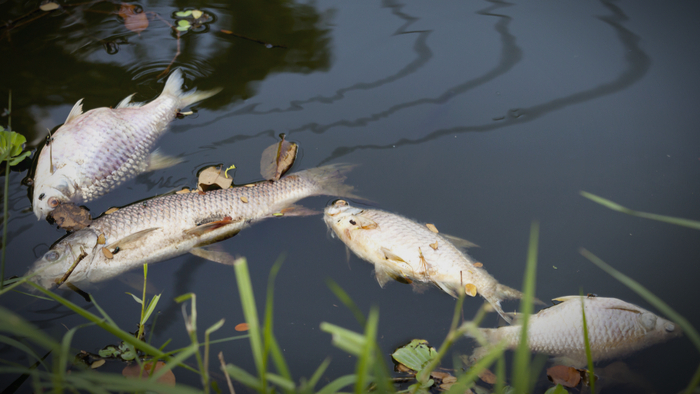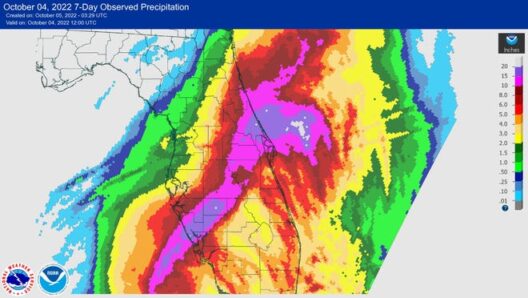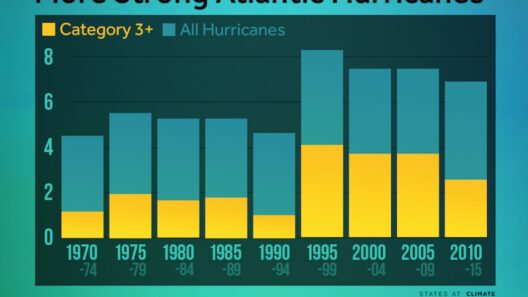Climate change, an omnipresent specter looming over humanity, is not merely an environmental crisis; it is an existential threat that directly endangers the world’s agricultural foundations. As we delve into the intricacies of this challenge, we unearth the multifaceted ways in which rising temperatures, erratic weather patterns, and shifting ecosystems imperil global farming.
The agricultural sector is remarkably sensitive to climatic conditions. Farmers rely on stable weather patterns to sow seeds, nourish crops, and harvest yields. However, climate change has catalyzed a paradigm shift, characterized by increased frequency and intensity of extreme weather events. Droughts, floods, and hurricanes are no longer anomalies but rather become the new norm, with devastating consequences for food production. In regions previously deemed agricultural havens, unpredictability now reigns supreme.
Drought, in particular, emerges as a critical factor thwarting crop yield. Prolonged dry spells wreak havoc, resulting in parched soils that can no longer support the cultivation of staple crops. As these droughts intensify, the implications become clearer: diminished agricultural outputs lead to heightened food insecurity. In many developing nations, this insecurity translates to malnutrition, while in developed economies, it engenders inflation and exacerbates socio-economic disparities.
In stark contrast to drought, excessive rainfall poses its own set of challenges. Flooding can inundate farmland, washing away precious topsoil and essential nutrients needed for healthy plant growth. Additionally, prolonged wet conditions create breeding grounds for pests and diseases, further jeopardizing harvests. The juxtaposition of these two extremes—drought and deluge—illustrates the inherent volatility that climate change introduces to global farming.
The implications of changing climates extend beyond immediate survival; they reverberate through entire ecosystems. Pollinators, crucial to the fertilization of many crops, are falling victim to temperature fluctuations and habitat destruction. A decline in pollinator populations—such as bees, butterflies, and birds—will inevitably lead to reduced crop yields. This stark reality prompts a contemplative inquiry: What would our world look like without these indispensable allies in agriculture?
Equally alarming is the salinity intrusion affecting arable land. Rising sea levels, a direct consequence of climate change, encroach upon coastal farmlands, rendering them less fertile. Saltwater intrusion damages soil quality, altering its chemistry and making it unsuitable for conventional crops. Farmers in coastal regions increasingly grapple with this reality, forcing them to adapt through innovative practices or abandon their ancestral lands altogether.
As global temperatures climb, the growing season’s dynamics are shifting. Some regions may experience longer growing seasons due to warmer temperatures, yet these benefits are overshadowed by climate volatility’s threats. Novel pests and diseases emerge, previously confined to tropical locales, while traditional varieties, cultivated over centuries, may no longer thrive in altered conditions. The necessity for crop diversification becomes paramount; however, transitioning to resilient strains entails considerable investment and knowledge that many smallholder farmers lack.
Moreover, the socio-economic ramifications of climate change in agriculture cannot be overstated. The disparity in resources between developed and developing nations grows increasingly pronounced. While affluent countries may possess the technology and infrastructure to adapt, poorer regions face insurmountable barriers. These nations often depend on a limited range of crops, increasing their vulnerability to climatic disruptions. Inequality abounds in the global food system, as those least responsible for climate change suffer its direst consequences.
In response to these challenges, innovative solutions are imperative. Sustainable agricultural practices—those that prioritize environmental stewardship and resource conservation—offer a flicker of hope. Agroecology, organic farming, and permaculture present vital alternatives, fostering resilience in the face of climate volatility. Practices such as crop rotation, intercropping, and cover cropping enhance soil health and biodiversity, ultimately supporting more robust agricultural systems.
Moreover, technology plays a pivotal role in transforming agricultural practices. Precision agriculture, enabled by data analytics and satellite imagery, allows farmers to monitor soil conditions, weather patterns, and crop health. This increased understanding empowers them to make informed decisions, optimizing yield while minimizing waste. However, access to these technologies remains uneven, often prioritizing larger agribusiness over the smallholder, further complicating the landscape of global farming.
Education and community engagement emerge as critical components in fostering sustainable agricultural practices. Knowledge-sharing initiatives can empower farmers to understand climate risks, experiment with crop varieties, or adopt regenerative practices. As communities come together, they begin to build resilience, creating networks of support that can transcend geographic limitations.
The pressing challenge of climate change, particularly its threat to global farming, beckons a transformation in our collective perspective. It urges society to prioritize adaptive and sustainable agricultural practices, invest in innovative technologies, and advocate for policies supporting equitable resource distribution. By reshaping our approach to farming in the face of this crisis, we stand at a crossroads where proactive measures can mitigate adverse effects while ensuring future generations inherit a sustainable agricultural legacy. Ultimately, a systemic shift toward resilience in agriculture represents not just a response to a challenge, but an opportunity for regeneration and renewal in the face of adversity.
Fields that once symbolized abundance can evolve into landscapes of sustainability, where farmers, scientists, and communities unite to confront climate change holistically. As we progress toward this vision, the promise lies within our ability to adapt, innovate, and collaborate on a global scale. Only then can humanity avert the looming specter of food insecurity and restore the resilience of our agricultural systems in the fight against climate change.







